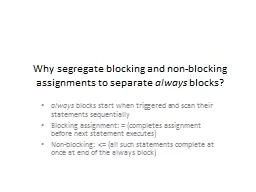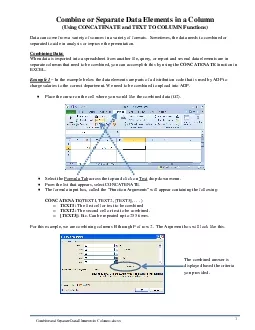PPT-Why segregate blocking and non-blocking assignments to separate
Author : celsa-spraggs | Published Date : 2018-10-26
always blocks always blocks start when triggered and scan their statements sequentially Blocking assignment completes assignment before next statement executes
Presentation Embed Code
Download Presentation
Download Presentation The PPT/PDF document "Why segregate blocking and non-blocking ..." is the property of its rightful owner. Permission is granted to download and print the materials on this website for personal, non-commercial use only, and to display it on your personal computer provided you do not modify the materials and that you retain all copyright notices contained in the materials. By downloading content from our website, you accept the terms of this agreement.
Why segregate blocking and non-blocking assignments to separate: Transcript
Download Rules Of Document
"Why segregate blocking and non-blocking assignments to separate"The content belongs to its owner. You may download and print it for personal use, without modification, and keep all copyright notices. By downloading, you agree to these terms.
Related Documents














